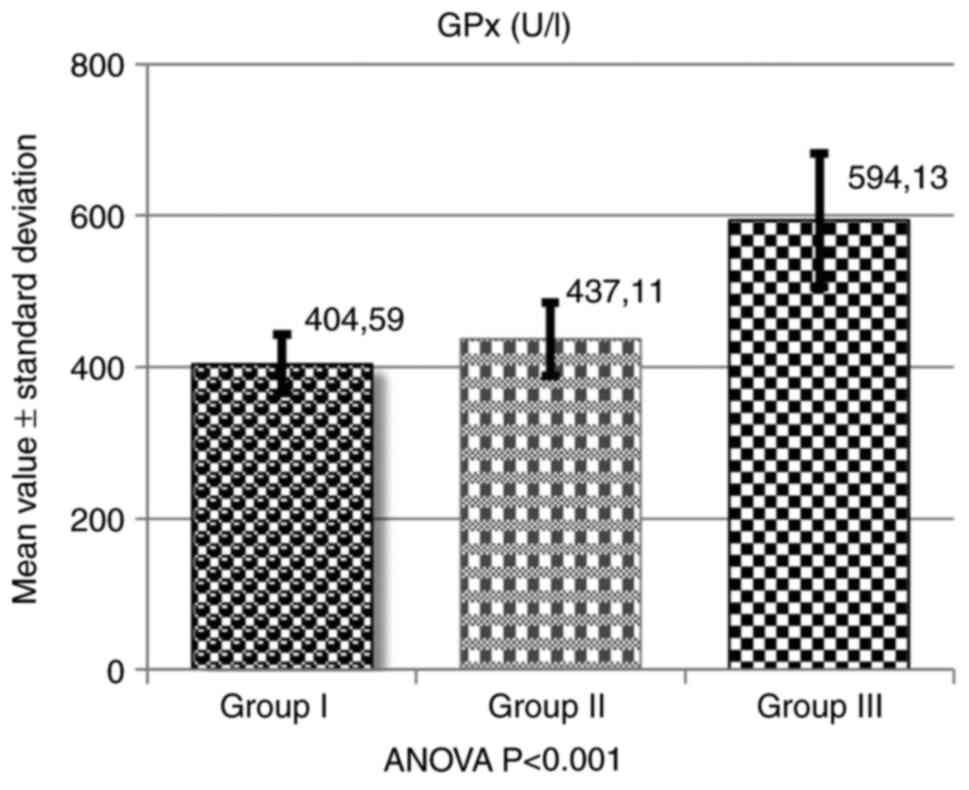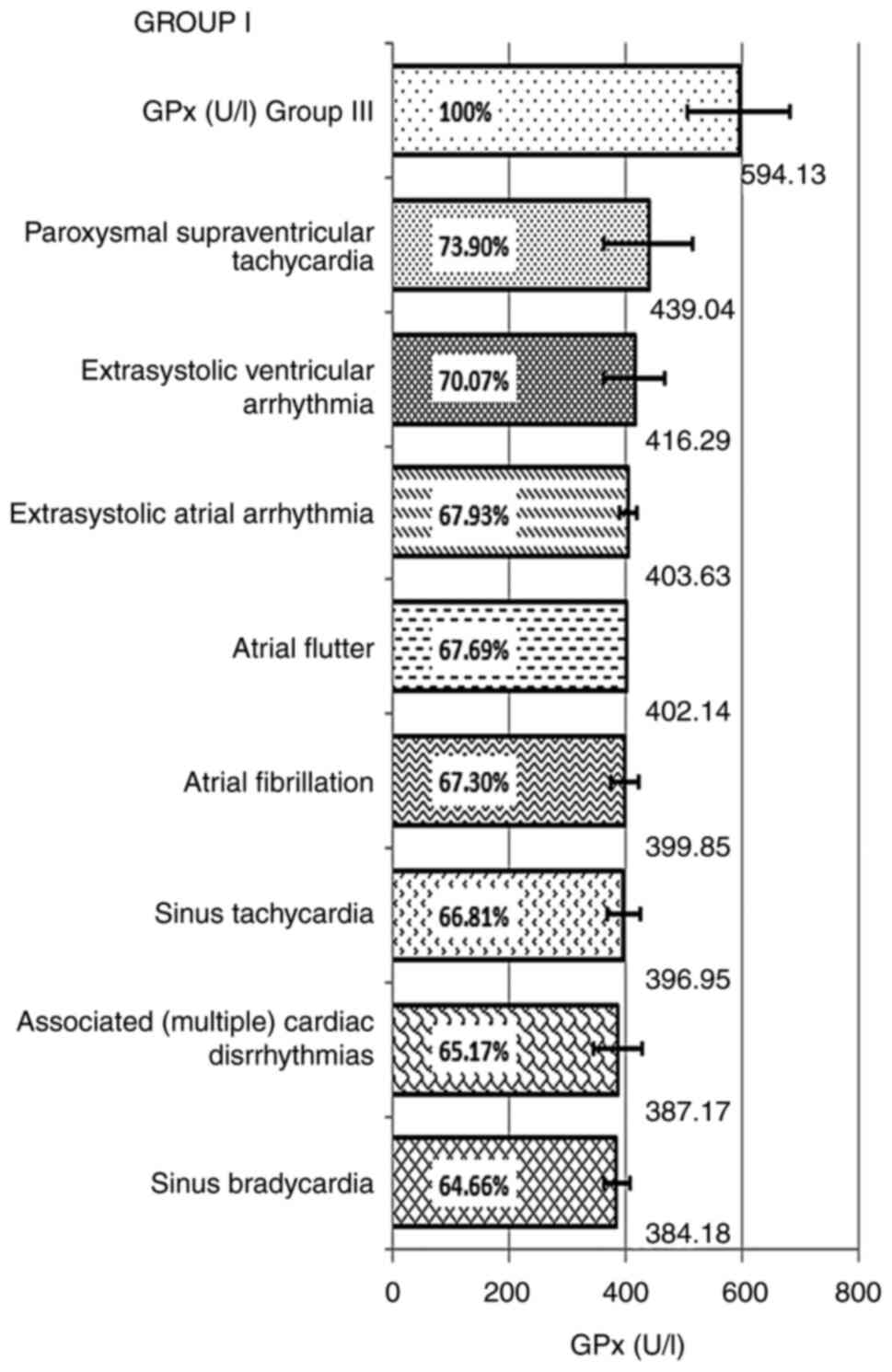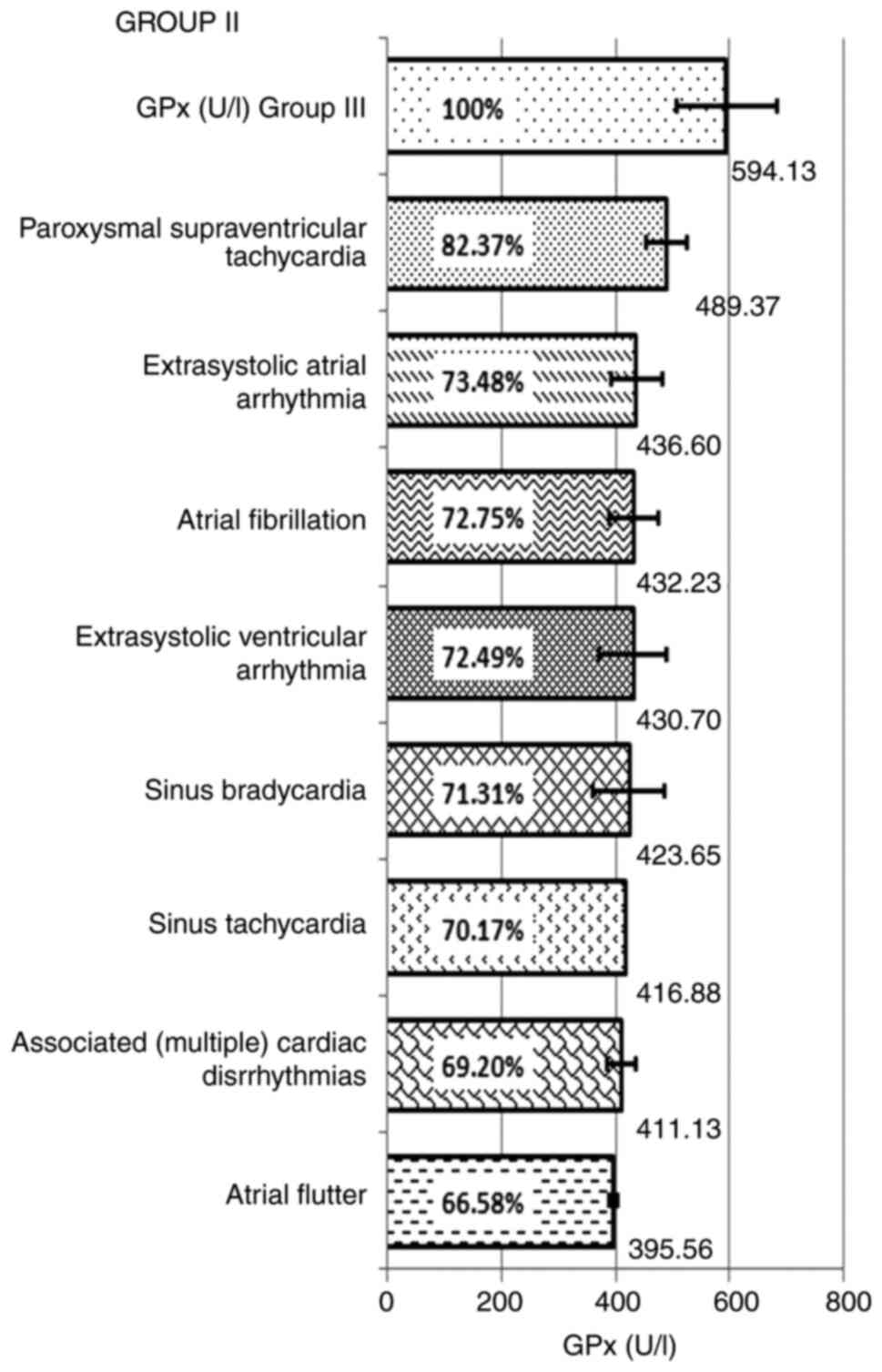|
1
|
Martínez Leo EE and Segura Campos MR:
Systemic oxidative stress: A key point in neurodegeneration-A
review. J Nutr Health Aging. 23:694–699. 2019.PubMed/NCBI View Article : Google Scholar
|
|
2
|
Chainy GBN and Sahoo DK: Hormones and
oxidative stress: An overview. Free Radic Res. 54:1–26.
2020.PubMed/NCBI View Article : Google Scholar
|
|
3
|
Beznă MC, Cârstea D, Beznă M, Deliu IC,
Alexandru DO and Ciurea P: Clinical study regarding arrhythmogenic
risk factors and oxidative stress inductibility in young people.
Curr Health Sci J. 41:251–258. 2015.PubMed/NCBI View Article : Google Scholar
|
|
4
|
Aydemir D, Öztaşcı B, Barlas N and Ulusu
NN: Effects of butylparaben on antioxidant enzyme activities and
histopathological changes in rat tissues. Arh Hig Rada Toksikol.
70:315–324. 2019.PubMed/NCBI View Article : Google Scholar
|
|
5
|
Herbette S, Roeckel-Drevet P and Drevet
JR: Seleno-independent glutathione peroxidases. More than simple
antioxidant scavengers. FEBS J. 274:2163–2180. 2007.PubMed/NCBI View Article : Google Scholar
|
|
6
|
Mahdavi R, Khabbazi T and Safa J: Alpha
lipoic acid supplementation improved antioxidant enzyme activities
in hemodialysis patients. Int J Vitam Nutr Res. 89:161–167.
2019.PubMed/NCBI View Article : Google Scholar
|
|
7
|
Yin J, Zhuang J, Lv S and Mu Y: Study on a
65-mer peptide mimetic enzyme with GPx and SOD dual function. J Mol
Recognit. 31(e2714)2018.PubMed/NCBI View
Article : Google Scholar
|
|
8
|
Winterbourn CC and Kettle AJ:
Radical-radical reactions of superoxide: A potential route to
toxicity. Biochem Biophys Res Commun. 305:729–736. 2003.PubMed/NCBI View Article : Google Scholar
|
|
9
|
Beznă MC, Cârstea D, Beznă M, Pisoschi C,
Istrătoaie O, Alexandru DO, Efrem C and Melinte PR: Estimation of
oxidative stress involvment by superoxide dismutase variation in
cardiac arrhythmias. Curr Health Sci J. 43:119–126. 2017.PubMed/NCBI View Article : Google Scholar
|
|
10
|
Chiarugi P: Reactive oxygen species as
mediators of cell adhesion. Ital J Biochem. 52:28–32.
2003.PubMed/NCBI
|
|
11
|
Beznă MC: Cardiac arrhythmias in young
people-assessment of oxidative stress biomarkers, genetic
polymorphisms and the risk of early endothelial lesions. PhD
dissertation, University of Medicine and Pharmacy of Craiova.
Sitech Publishing House, Craiova, Romania. Medical Science
Collection, no. 408, pp20-28, 2017. ISBN: 978-606-11-7133.
|
|
12
|
Bezna MC, Pisoschi C, Bezna M, Danoiu S,
Negroiu CE and Melinte PR: Variation of total antioxidant activity
in young people with non-lesional cardiac arrhythmias. Curr Health
SCi J. 47:558–565. 2021.PubMed/NCBI View Article : Google Scholar
|
|
13
|
Pastori D, Pignatelli P, Farcomeni A,
Menichelli D, Nocella C, Carnevale R and Violi F: Aging-related
decline of glutathione peroxidase 3 and risk of cardiovascular
events in patients with atrial fibrillation. J Am Heart Assoc.
5(e003682)2016.PubMed/NCBI View Article : Google Scholar
|
|
14
|
Lowhalidanon K and Khunkaewla P:
Discrimination between minimally modified LDL and fully oxidized
LDL using monoclonal antibodies. Anal Biochem.
619(114103)2021.PubMed/NCBI View Article : Google Scholar
|
|
15
|
Akhmedov A, Sawamura T, Chen CH, Kraler S,
Vdovenko D and Lüscher TF: Lectin-like oxidized low-density
lipoprotein receptor-1 (LOX-1): A crucial driver of atherosclerotic
cardiovascular disease. Eur Heart J. 42:1797–1807. 2021.PubMed/NCBI View Article : Google Scholar
|
|
16
|
Yang X, Li D, Qi YZ, Chen W, Yang CH and
Jiang YH: MicroRNA-217 ameliorates inflammatory damage of
endothelial cells induced by oxidized LDL by targeting EGR1. Mol
Cell Biochem. 475:41–51. 2020.PubMed/NCBI View Article : Google Scholar
|
|
17
|
Gąsecka A, Rogula S, Szarpak Ł and
Filipiak KJ: LDL-Cholesterol and platelets: Insights into their
interactions in atherosclerosis. Life (Basel).
11(39)2021.PubMed/NCBI View Article : Google Scholar
|
|
18
|
Barreto J, Karathanasis SK, Remaley A and
Sposito AC: Role of LOX-1 (Lectin-like oxidized low-density
lipoprotein receptor 1) as a cardiovascular risk predictor:
Mechanistic insight and potential clinical use. Arterioscler Thromb
Vasc Biol. 41:153–166. 2021.PubMed/NCBI View Article : Google Scholar
|
|
19
|
Ha K, Kim K, Sakaki JR and Chun OK:
Relative validity of dietary total antioxidant capacity for
predicting all-cause mortality in comparison to diet quality
indexes in US adults. Nutrients. 12(1210)2020.PubMed/NCBI View Article : Google Scholar
|
|
20
|
Phan MAT, Paterson J, Bucknall M and Arcot
J: Interactions between phytochemicals from fruits and vegetables:
Effects on bioactivities and bioavailability. Crit Rev Food Sci
Nutr. 58:1310–1329. 2018.PubMed/NCBI View Article : Google Scholar
|
|
21
|
Mozaffari H, Daneshzad E, Surkan PJ and
Azadbakht L: Dietary total antioxidant capacity and cardiovascular
disease risk factors: A systematic review of observational studies.
J Am Coll Nutr. 37:533–545. 2018.PubMed/NCBI View Article : Google Scholar
|
|
22
|
Chaudhary P, Pandey A, Azad CS, Tia N,
Singh M and Gambhir IS: Association of oxidative stress and
endothelial dysfunction in hypertension. Anal Biochem.
590(113535)2020.PubMed/NCBI View Article : Google Scholar
|
|
23
|
Jun S, Chun OK and Joung H: Estimation of
dietary total antioxidant capacity of Korean adults. Eur J Nutr.
57:1615–1625. 2018.PubMed/NCBI View Article : Google Scholar
|
|
24
|
Nascimento-Souza MA, Paiva PG, Silva AD,
Duarte MSL and Ribeiro AQ: Coffee and tea group contribute the most
to the dietary total antioxidant capacity of older adults: A
population study in a Medium-Sized Brazilian City. J Am Coll Nutr.
3:713–723. 2021.PubMed/NCBI View Article : Google Scholar
|
|
25
|
Valoppi F, Haman N, Ferrentino G and
Scampicchio M: Inhibition of lipid autoxidation by vegetable waxes.
Food Funct. 11:6215–6225. 2020.PubMed/NCBI View Article : Google Scholar
|
|
26
|
Niki E: Oxidant-specific biomarkers of
oxidative stress. Association with atherosclerosis and implication
for antioxidant effects. Free Radic Biol Med. 120:425–440.
2018.PubMed/NCBI View Article : Google Scholar
|
|
27
|
Tan BL, Norhaizan ME and Liew WP:
Nutrients and oxidative stress: Friend or Foe? Oxid Med Cell
Longev. 2018(719584)2018.PubMed/NCBI View Article : Google Scholar
|
|
28
|
Orzechowski A, Cywińska A, Rostagno AA and
Rizzi FM: Oxidative stress, chronic inflammation, and amyloidoses.
Oxid Med Cell Longev. 2019(6024975)2019.PubMed/NCBI View Article : Google Scholar
|
|
29
|
van der Pol A, van Gilst WH, Voors AA and
van der Meer P: Treating oxidative stress in heart failure: Past,
present and future. Eur J Heart Fail. 21:425–435. 2019.PubMed/NCBI View Article : Google Scholar
|
|
30
|
Vassalle C, Maltinti M and Sabatino L:
Targeting oxidative stress for disease prevention and therapy:
Where do we stand, and where do we go from here. Molecules.
25(2653)2020.PubMed/NCBI View Article : Google Scholar
|
|
31
|
Bacchetti T, Turco I, Urbano A, Morresi C
and Ferretti G: Relationship of fruit and vegetable intake to
dietary antioxidant capacityand markers of oxidative stress: A
sex-related study. Nutrition. 61:164–172. 2019.PubMed/NCBI View Article : Google Scholar
|
|
32
|
Apak R: Current issues in antioxidant
measurement. J Agric Food Chem. 67:9187–9202. 2019.PubMed/NCBI View Article : Google Scholar
|

















